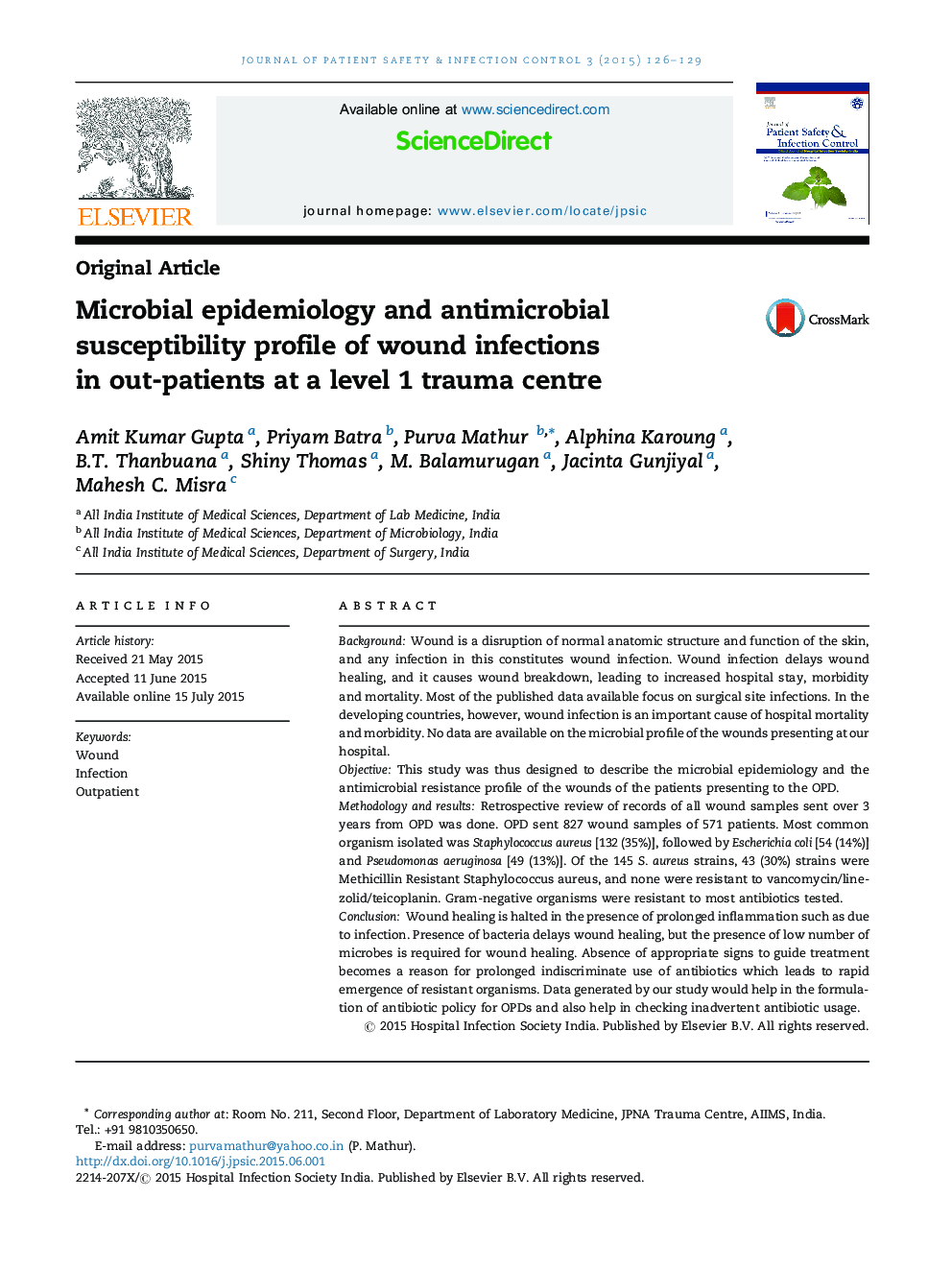| Article ID | Journal | Published Year | Pages | File Type |
|---|---|---|---|---|
| 3406411 | Journal of Patient Safety & Infection Control | 2015 | 4 Pages |
BackgroundWound is a disruption of normal anatomic structure and function of the skin, and any infection in this constitutes wound infection. Wound infection delays wound healing, and it causes wound breakdown, leading to increased hospital stay, morbidity and mortality. Most of the published data available focus on surgical site infections. In the developing countries, however, wound infection is an important cause of hospital mortality and morbidity. No data are available on the microbial profile of the wounds presenting at our hospital.ObjectiveThis study was thus designed to describe the microbial epidemiology and the antimicrobial resistance profile of the wounds of the patients presenting to the OPD.Methodology and resultsRetrospective review of records of all wound samples sent over 3 years from OPD was done. OPD sent 827 wound samples of 571 patients. Most common organism isolated was Staphylococcus aureus [132 (35%)], followed by Escherichia coli [54 (14%)] and Pseudomonas aeruginosa [49 (13%)]. Of the 145 S. aureus strains, 43 (30%) strains were Methicillin Resistant Staphylococcus aureus, and none were resistant to vancomycin/linezolid/teicoplanin. Gram-negative organisms were resistant to most antibiotics tested.ConclusionWound healing is halted in the presence of prolonged inflammation such as due to infection. Presence of bacteria delays wound healing, but the presence of low number of microbes is required for wound healing. Absence of appropriate signs to guide treatment becomes a reason for prolonged indiscriminate use of antibiotics which leads to rapid emergence of resistant organisms. Data generated by our study would help in the formulation of antibiotic policy for OPDs and also help in checking inadvertent antibiotic usage.
